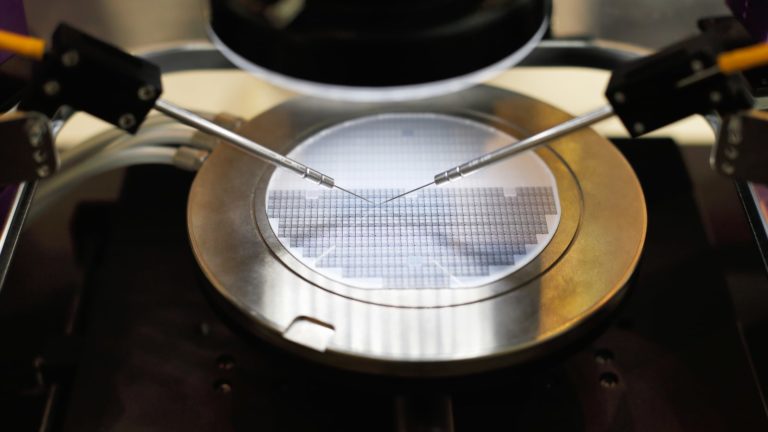Artificial Intelligence (AI) has received remarkable buzz this year. The release of OpenAI’s ChatGPT has captured the imaginations of technology enthusiasts, social commentators, investors and everyday consumers. ChatGPT’s profound capabilities, from helping calculus students with their math homework to debugging entire complex algorithms, has made investors contemplate: “What is next for the AI revolution?” Tech companies invested in AI breakthroughs have performed well as investors have sought to get in on the AI hype.
If an investor were looking for favorable returns on an investment in AI stocks, a safer bet could be to target the publicly listed semiconductor companies making AI possible, rather than the cash-burning businesses of some AI startups. Below is a list of 3 semiconductor stocks leading the AI charge.
Nvidia (NVDA)

Nvidia (NASDAQ:NVDA) needs little introduction at this point, as shares of the well-renowned graphics card designer are up almost 187% year-to-date. Nvidia’s A100 and H100 chips help power the elaborate large language models (LLMs) used to train AI chatbots like ChatGPT. In a prior piece I wrote for InvestorPlace, I cautioned against investing in Nvidia. I had reservations due to decelerating revenue growth from a lack of consumer demand for graphics chips. Indeed, the chipmaker did report a 38% year-over-year decrease in revenues for its ‘Gaming’ division. However, Nvidia’s financial results were driven well-above expectations due to a demand for its AI chips used in data centers.
To gain on the upside of the artificial intelligence craze, Nvidia looks increasingly like a good long-term bet. Despite macroeconomic factors dampening graphics cards sales, Nvidia’s leading position in AI language model chips implies a positive future for the company.
Advanced Micro Devices (AMD)

Advanced Micro Devices (NASDAQ:AMD) has garnered significant attention from investors and consumers alike over the recent years. The company has a larger breadth of products than Nvidia, designing both central processing units (CPUs), powering many modern PCs and servers and graphics cards. To the surprise of many market observers, AMD’s CPUs have been able to steal significant market share from microprocessor giant, Intel (NASDAQ:INTC), and those trends do not appear to be reversing.
When it comes to graphics cards powering the AI revolution, there is still room for AMD to grow and improve. This Tuesday, AMD announced the MI300x GPU which will compete with Nvidia’s A100 and H100 chips on training AI models. If AMD can price competitively there could be a clear opportunity for the company to capture market share. AMD has an arduous uphill battle to dethrone Nvidia, who currently claims 80% of the AI chip market for itself. Despite that, I urge market spectators to continue observing how this competitive landscape will alter over the next year.
Apple (AAPL)

Apple’s (NASDAQ:AAPL) is in a unique position to lead the charge in a market dominated by traditional semiconductor companies. For many, the beloved consumer electronics giant would probably be the least likely contender for this list. However, its sizable cash balance and experiments with AI in their “Bionic” CPUs have given the company a unique opportunity. Apple has spent the past decade as both a leading consumer electronics provider and semiconductor designer. The company is developing fast and efficient in-house systems-on-a-chip (SoC) and relying less on semiconductor components designed by Qualcomm.
The “Bionic” chips, which were first released as the A11 chipset on the iPhone 8 in 2017, included, for the first time, a dedicated neural processor designed for tasks such as face and speech recognition. The chipset has gone through multiple iterations since its release, and they have consistently outperformed Qualcomm’s own “Snapdragon” SoCs, which are primarily used on smartphones running Alphabet’s (NASDAQ:GOOGL,NASDAQ:GOOG) Google Android software. Similarly, in 2020, Apple launched the M1 chipset, and these have begun to replace Intel’s CPUs in Apple’s Macs.
All in all, Apple has had much success in building its own chipsets that utilize AI. This coupled with the fact the company is boasting a large $55 billion cash and saleable investment balance on its balance sheet, indicates Apple has plenty more leg-room to invest in the world of AI.
On the date of publication, Tyrik Torres did not have (either directly or indirectly) any positions in the securities mentioned in this article. The opinions expressed in this article are those of the writer, subject to the InvestorPlace.com Publishing Guidelines.
